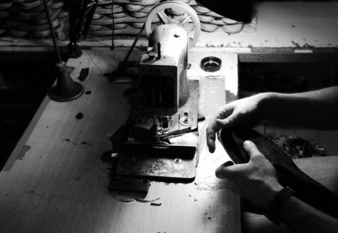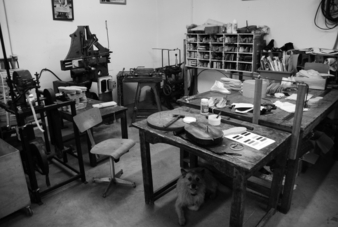01/09/2015 — auf Deutsch lesen
The genuine espadrille
Every summer, the shops are suddenly swamped with them, come the autumn they are spilling out of the bins. The talk here is of espadrilles made in Asia. The cheap products from the Far East can be picked up for just a few pennies almost anywhere in the world. The label Espadrij l'originale is venturing down a very different path, working together with factories in the South of France and Northern Spain, the true home of espadrilles.
In the 1980s, says Felix Staeudinger, CEO of Panorama Europe GmbH, the French Pyrenees were peppered with factories. "But then the Chinese came along and flooded the market with their cheap products," he laments. This forced many businesses to close, with unemployment in the rural areas driving people into the big cities. All that remains today is a handful of factories. “There aren’t many people who really master this craft or who can work the machines. We work exclusively with these skilled people, as we continue to breathe new life into this traditional product." Fortunately, besides the trend towards cheap mass produced products, he has also identified a strong push towards sustainability and quality. Many customers have started looking for authentic and exclusive products again. Hand-made and, above all, ecological shoes are thus perfectly in keeping with the spirit of our times.
The businesses located in the Pyrenees villages are still best described as manufactories. Each shoe is made individually on old machines and by hand. The workshops are more like museums than places of employment. Staeudinger has no real idea of how old the machinery actually is. The majority of machines date from the 1970s and 1980s, whilst others, he believes, are around a hundred years old. The shoe itself goes back much further in time. Originally, espadrilles consisted of soles made from esparto grass, from which the name was most probably derived. This vegetable fibre sole was and still is the signature feature of the entire range of linen models, be they flat or with heels.
Gummed with natural rubber, the jute soles of Espadrij l'originale can quite happily withstand a rain shower, although wading through streams is certainly not to be recommended, Staeudinger confirms. "The shoe really doesn’t like getting wet." In contrast to their Asian cousins, they last for several years, provided they receive suitable care and attention and depending on how they are worn. Staeudinger attaches much importance to ensuring quality standards are as they should be. Ever since he started marketing the brand, sales have been steadily rising. In fact, it finally got to the point where the French manufacturers were struggling to keep abreast of order levels.
This had a detrimental effect on quality, necessitating a change of plan. In collaboration with the French, a decision was made to produce the heeled models in northern Spain. The shoes from Spain are still largely made by hand, although the production process has been perfected. The Spanish operation also draws on its expertise in a traditional method of vulcanising rubber. By expanding production in this way, it has been possible to meet demand whilst giving the French makers some much needed relief. The manufacturers are now doing what they know best. When talking to Felix Staeudinger his deeply felt commitment to France is palpable. This may be because the livelihoods of the majority of villagers is practically wholly dependent on his success at selling the brand. A good working relationship and consensus over the values associated with the product are essential to the brand’s success. These values include quality, authenticity and sustainability.
The latter is a crucial element of the philosophy behind Espadrij l'originale. With the exception of the jute, which is imported from Bangladesh, the distributor prefers short transportation routes. Staeudinger buys the canvas from Spain, and the rubber from France. When delivering the goods to his major customers, he makes use of as little plastic as possible. Even so, plastic cannot always be avoided as some customers, such as online stores, insist on polybags. The pairs of shoes are held together with a simple elastic band and are presented in a wooden box with a burnt-on logo as standard. These wooden boxes are also the only advertising material used for these canvas shoes. Staeudinger tries not to spend unnecessary funds on complex embellishments. He is only interested in good presentation which he believes the boxes deliver. After all, it is all about achieving a healthy price/performance ratio.
The company’s competitors from the low-cost countries of the world evidently achieve more profitable margins. Even so, Staeudinger is convinced that he offers good value for money. He sells a high-quality shoe that is trendy and made from natural materials, all for a reasonable price. Ideas for new designs are developed in collaboration with the French on the basis of market and retail trends. So although the tradition is being kept alive, fashion is very much key. Even a classical product has to be en vogue and adapted to the times, Staeudinger states.
When a pair of Espadrij l'originale finally reaches the end of its life, it does not have to end up in the rubbish bin. Thanks to its natural materials, it can simply be thrown on the compost heap.
[Anja Obst]
Cut the fabric, sew the edges, attach to the sole and sew again, then attach the rubber sole. The most difficult step comes last: Trim the thread so it cannot work itself loose. This is done by home workers. This spot can only be noticed on closer inspection of the shoe. Even a little pull will not release the thread.





